- All events
- Academic Calendar
- Institute Holidays
- Events Calendar
Loading...
- Dec 83:00 PMLuisa Cefala (Cornell University)TBD
- Dec 84:00 PM12/1 Eric Verhoogen At MIT, joint with Harvard
- Dec 84:00 PMA Double Dose of Reform: Insurance and Centralized Negotiation in Drug MarketsAshley Swanson (UW Madison)
- Dec 84:00 PMAging Brain Seminar with Kang Shen, PhD, Stanford UniversityAging Brain Seminar with Kang Shen, PhD, Stanford UniversityDate: Monday, December 8Time: 4:00pmLocation: 46-3310, Picower Seminar Room (In-person only)
- Dec 84:00 PMChemical Biology Seminar (Christian Griesinger, Max-Planck-Gesellschaft)"Protein Dynamics and Modulation of Aggregation at the Oligomer Level Relevant in Neurodegeneration: Insights by NMR”
- Dec 84:00 PMPublic Finance/Labor SeminarTBA | Melissa Kearney (Maryland)
- Dec 84:15 PMLit TeaCome by for snacks, and tea with Literature Section friends, instructors, students, etc. What are you reading? What 21L classes are you taking or hoping to take? This event is specifically geared towards undergrads; but open to friends of the community that engage in the literary and humanities at MIT.
- Dec 84:30 PMAlgebraic Topology SeminarSpeaker: Ismael Sierra Del Rio (University of Toronto)
- Dec 84:30 PMRobert W. StaigerGeopolitics and the World Trading System (with Aaditya Mattoo and Michele Ruta)
- Dec 86:00 PMWoodblock Printing: Seasonal CardsExplore centuries-old artistic traditions through new fabrication technology in this 3-part workshop.After an introduction to woodblock printing techniques, you’ll craft your own prints across three sessions. First, learn how to use the Museum’s laser cutter. Next, use design software to transform photos, words, and/or graphics into bold outlines. Lastly, ink your laser-cut blocks and add color.Use your new skills to make seasonal cards or create artistic prints in any style!Participants must be available for all three sessions. No prior experience necessary.This is an 18+ workshop series.Session Dates:December 1, 2025 December 8, 2025 December 15, 2025$120
- Dec 86:45 PMArgentine Tango Class SeriesJoin us on Monday evenings for Argentine tango classes with outstanding instructors. Whether you are completely new to tango, or already have some experience, you will find a friendly environment in which to learn new things and improve your technique. You don't have to bring a partner, since the classes involve rotations with all participants.Full Series: Sep 15, 22, 29, October 6, 13, 20, 27, Nov 3, 10, 17, 24, Dec 1, 8, 15.For all info and registration, visit following link.
- Dec 9All dayExhibit NOW in IMES E25-310, from May 23 onward! Stop by to visit and learn more!
- Dec 910:00 AMExhibition: AI: Mind the GapThe irony of artificial intelligence is that it often reveals more about human intelligence than machines themselves.From AI in the home to robots in the workplace, the presence of AI all around us compels us to question its potential and recognize the risks. What has become clear is that the more we advance AI technology and consider machine ability versus human ability, the more we need to mind the gap.Researchers at MIT have been at the forefront of this evolving field. The work presented in this exhibition builds on the pioneering contributions of figures such as Claude Shannon and Seymour Papert, while highlighting contemporary research that spans computer science, mechanical engineering, neuroscience, and the social sciences.As research probes the connections between human and machine intelligence, it also underscores the profound differences. With AI now embedded in everyday life — from smart assistants in our homes to robots in the workplace — we are challenged to ask critical questions about its potential, its risks, and the boundaries between machine ability and human capability.Join us in shining light on the tremendous promise, unforeseen impacts, and everyday misconceptions of AI in this riveting, interactive exhibition.Learn more about the exhibition.
- Dec 910:00 AMExhibition: CosmographImagine different worlds in Cosmograph: Speculative Fictions for the New Space Age, an exhibition that brings art and science together to examine possible futures where outer space is both a frontier for human exploration and a new territory for exploitation and development by private enterprise.We are living at the dawn of a New Space Age. What will the future hold? Will space elevators bring humanity's space junk to turn it into useful material here on Earth? Will asteroid mining be the next frontier in prospecting? Will the promise of geo-engineering turn into a nightmare of unintended consequences?Explore these possibilities and more in our new exhibition that blurs the lines between fact and fantasy, and art and science.
- Dec 910:00 AMExhibition: Essential MITMIT is not a place so much as it is a unique collection of exceptional people.What is essential at MIT is asking questions others may not ask, trying the unexpected in pursuit of a greater solution, and embracing distinctive skills and combinations of talents. Whether encompassing global issues, ventures into space, or efforts to improve our daily lives, stories told in this exhibit showcase the process of discovery that sits at the heart of MIT.Delve into the experimental culture and collaborative spirit of the MIT community in this dynamic and interactive exploration of groundbreaking projects and ongoing innovation."MIT’s greatest invention may be itself—an unusual concentration of unusual talent, forever reinventing itself on a mission to make a better world." — President L. Rafael ReifLocated in the Brit J. (1961) and Alex (1949) d'Arbeloff GallerySupported by the Biogen Foundation
- Dec 910:00 AMExhibition: Future TypeHow can code be used as a creative tool by artists and designers?This question motivates the work of the Future Sketches group at the MIT Media Lab. Led by artist and educator Zach Lieberman, the group aims to help us “see” code by using it to make artistically controlled, computer-generated visuals.Explore some of the latest research from the group that uses typography and digital tools to create interactive, creative, and immersive work.Located in our Martin J. (1959) and Eleanor C. Gruber Gallery.
- Dec 910:00 AMExhibition: GansonExperience the captivating work of Arthur Ganson, where his perceptions of the world are choreographed into the subtle movements and gestures of his artistic machines."These machines are daydreams condensed into physical form, computer programs manifesting in three-dimensional space." - Arthur GansonArthur Ganson's medium is a feeling or idea inspired by the world he perceives around him – from the delicate fluttering of paper to the sheer scale of the universe. Combining engineering genius with whimsical choreography, he creates machines to encode those ideas into the physical world. But he invites everyone to draw their own conclusions on the meaning behind the subtle gestures of the machines.Currently on display are a select group of Arthur Ganson's works from our MIT Museum Collection. We expect to exhibit his work in large numbers in the future.
- Dec 910:00 AMExhibition: MIT CollectsMIT Collects features objects and other media from the museum's vast collection, arranged in areas that tell stories, explore themes, and dive into subject areas.Modeling Everything:Models and model-making, both the objects and the action, are vital to every research area at MIT and to the life of the Institute itself. Explore a wide array of models for teaching, discovery, research, and documentation, from ships to crystal structures to architectural design.Radical Atoms:Hiroshi Ishii and the Tangible Media Group at the MIT Media Lab have pioneered new ways for people to interact with computers, with the invention of the “tangible user interface.” It began with a vision of “Tangible Bits,” where users can manipulate ordinary physical objects to access digital information. It evolved into a bolder vision of “Radical Atoms,” where materials can change form and reconfigure themselves just as pixels can on a screen.This experimental exhibit of three iconic works—SandScape, inFORM, and TRANSFORM—is part of the MIT Museum’s ongoing efforts to collect the physical machines as well as preserve the user experience of, in Ishii’s words, making atoms dance.A Sequence of Actions:Developed and operated at MIT, the Differential Analyzer, Whirlwind Computer, and Apollo Guidance Computer were massive and complex projects that involved thousands of people. See historical components and artifacts from this critical era in programming during the mid-20th century and explore how these early programmers influenced today’s digital culture.Technology and the Dream:Through recordings of students, staff, researchers, and community members, listen to personal reflections and gain a sense of the Black experience at MIT. This dynamic audio installation is co-curated with the MIT Black History Project.Totally Useless Things:Toys, puzzles, and play are a significant part of the creative process. Playful activity can shape a research agenda or an entire discipline. Extracurricular play — like MIT's famous hacks — enhances creativity and community. And play itself is a rich field for scientific research. Jump in and learn how curiosity is the fuel that discovery runs on.Located in the Edward O. Thorp Gallery
- Dec 910:00 AMExhibition: Monsters of the DeepHow can you investigate something you cannot see?The challenge of understanding the unknown motivates scientists today, just as it has inspired curious people for centuries.Using material from the Allen Forbes Collection, this exhibit traces the scientific process of observing, measuring, and describing that turned whales from monsters into mammals.Using prints from the sixteenth through the nineteenth centuries, Monsters of the Deep examines how European knowledge about the creatures of the sea was informed by new information from sailors, scholars, and beachcombers, and how that knowledge transformed what people understood about the natural world.Want a closer look at what we have on view? You can explore digitized versions of exhibition objects here.On view through January 2026.
- Dec 910:00 AMExhibition: Radical AtomsHiroshi Ishii and the Tangible Media Group at the MIT Media Lab have pioneered new ways for people to interact with computers, with the invention of the “tangible user interface.”It began with a vision of "Tangible Bits," where users can manipulate ordinary physical objects to access digital information. It evolved into a bolder vision of "Radical Atoms," where materials can change form and reconfigure themselves just as pixels can on a screen. This experimental exhibit of three iconic works — SandScape, inFORM, and TRANSFORM — is part of the MIT Museum's ongoing efforts to collect the physical machines as well as preserve the user experience of, in Ishii's words, making atoms dance.Learn more about the exhibits here, or watch the YouTube video of Hiroshi Ishii's talk at the MIT Museum below.This is an ongoing exhibition in our MIT Collects exhibition.
Load more...
Loading...





